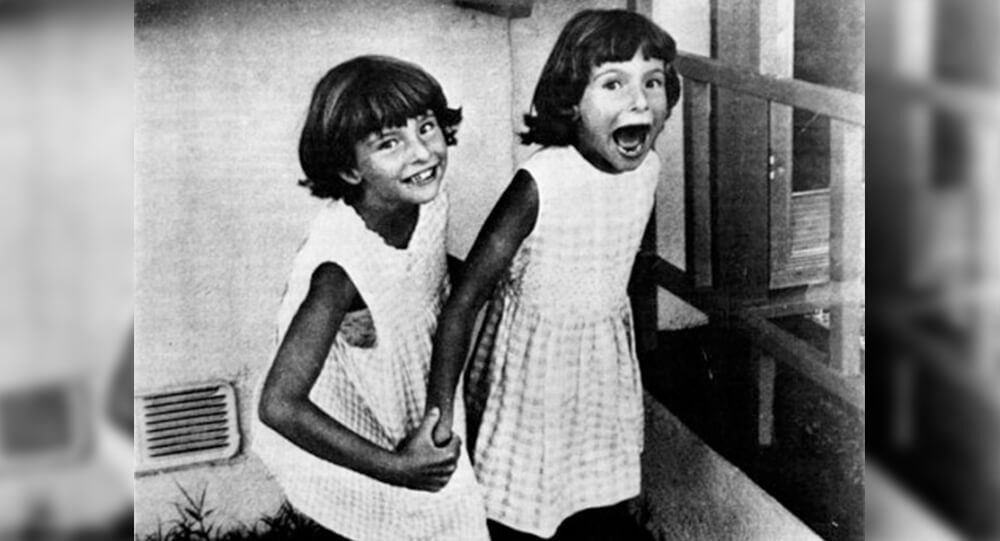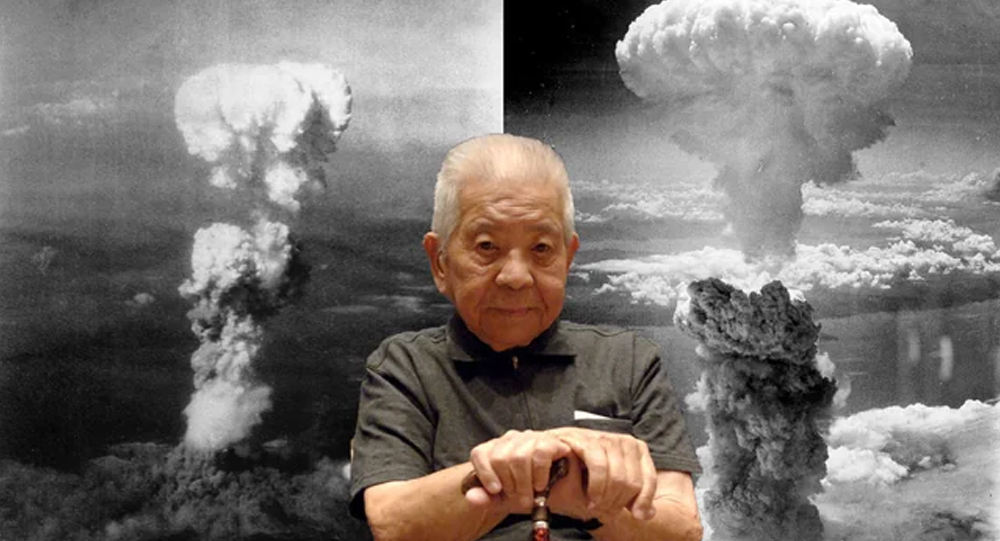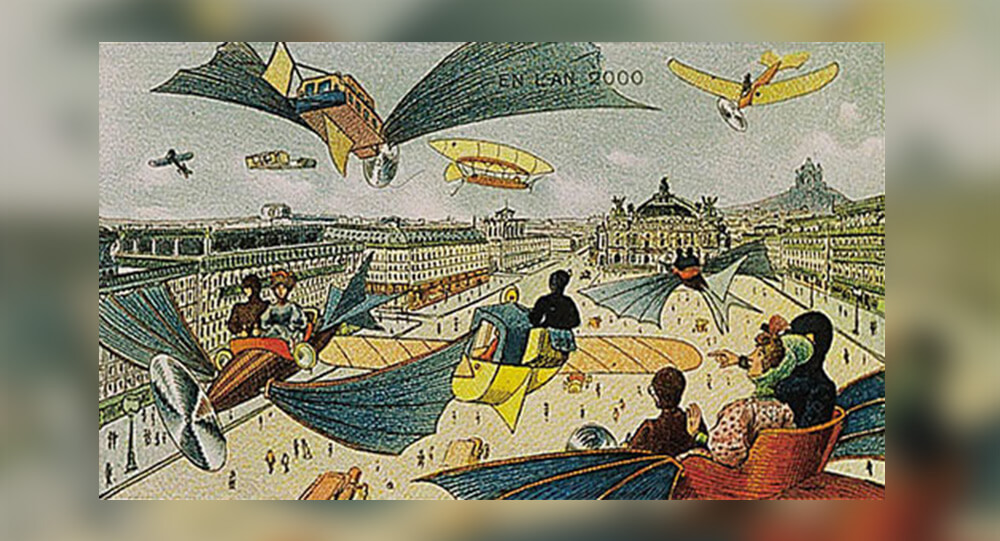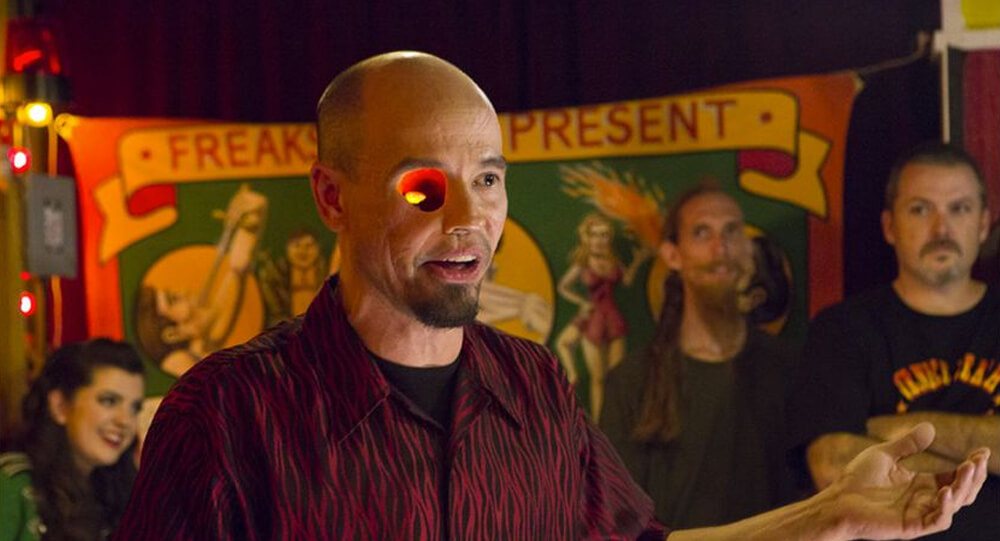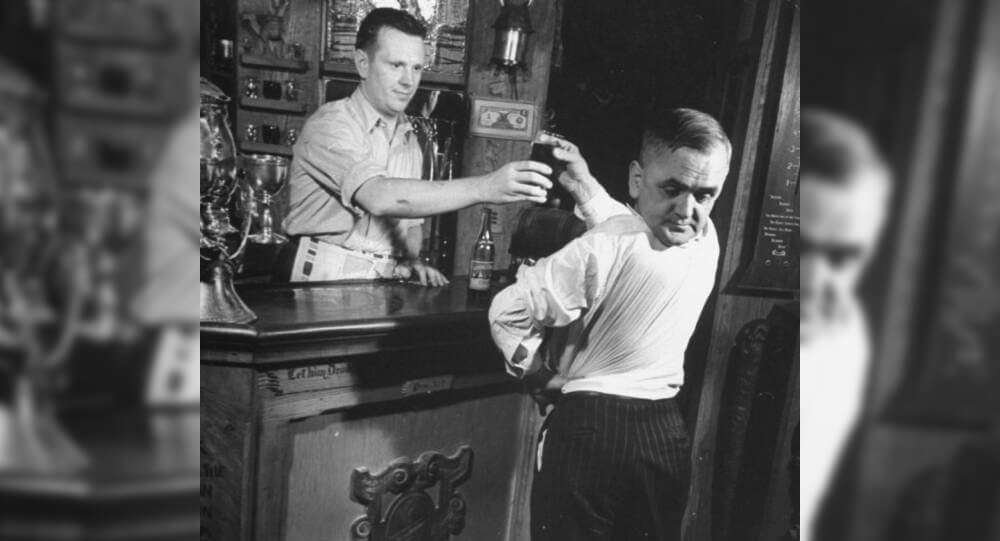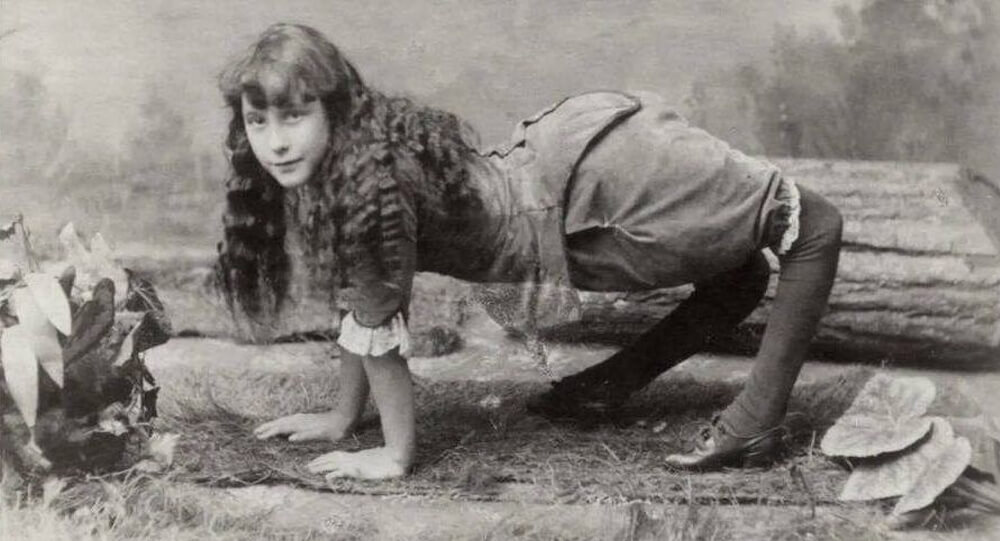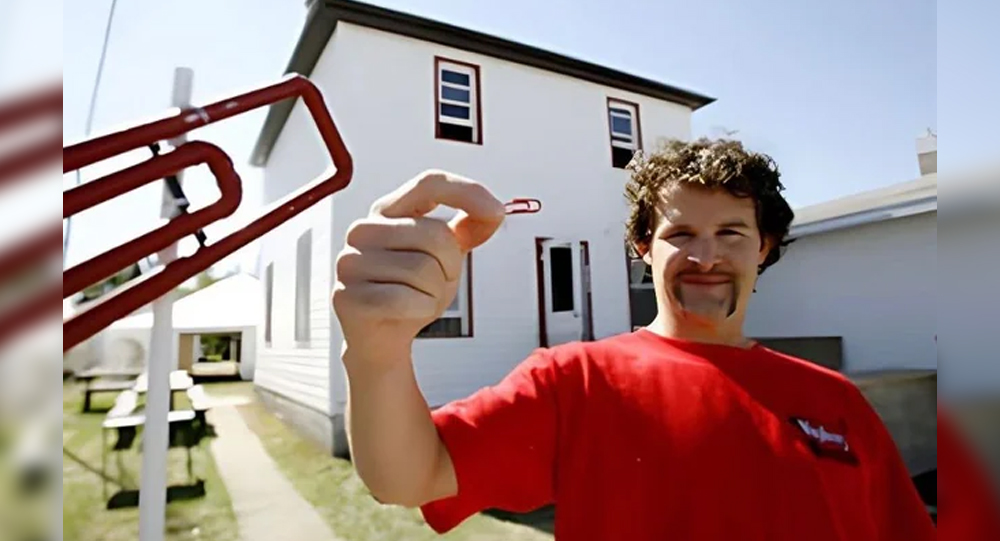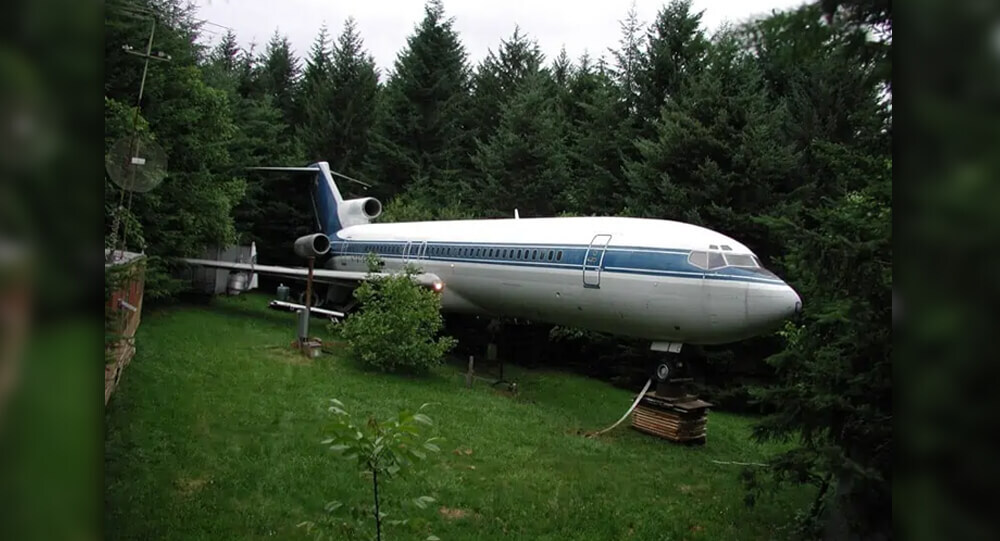
The last thing you’d expect to see nestled in a clearing in an Oregonian forest is a Boeing 727. It’s not always a plane crash that leaves an airplane in the middle of the forest. Campbell converted an airplane into his home, and the interior is quite special. The article was first published on July 5, 2003. Electrical engineer Bruce Campell, 64, has always had a very imaginative vision. He transformed a large plot of land and an old airplane into the most extraordinary house ever. He thinks that even after they are retired, airplanes can still be used in a variety of ways. To build the one-of-a-kind home on Earth, he used his imagination, an old airplane, and a good piece of land.
In contrast to the stereotype of the typical American home, Campbell has chosen a more daring strategy. Rusty Campbell was drawn to this plane’s iconic design and decided to take on the challenge of turning it into a home. A dreamer and an engineer living in a three-engine commercial airplane home tucked away in the dense forest outside of Portland. Campbell thinks that after tidal waves have destroyed homes, retired aircraft can be used as affordable housing and as airtight, floating shelters.
The Campbells’ dreams came true when they had a retired Boeing 727 transformed into a cabin in the woods. They had to remove the plane’s wings in order to transport it. He replaced the wings after the aircraft arrived at its destination.
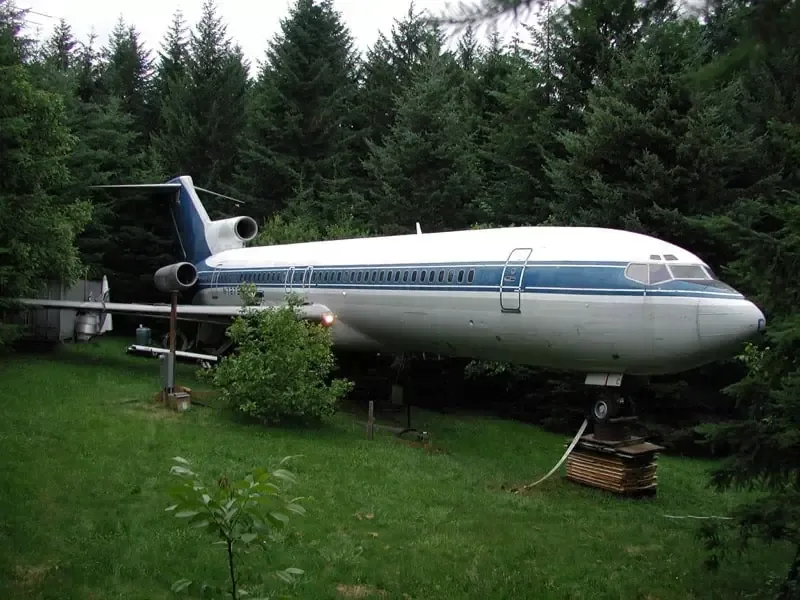
The coolest trick may be the transparent floor
Every child’s dream house, Campbell’s airplane has plenty of places to climb and crawl. They have to use the original fold-down stairwell from the airplane to get into Bruce Campbell’s Boeing residence. The room is cozy but by no means claustrophobic at 1,066 interior square feet; when configured as a large studio, it feels spacious enough.
The coolest trick may be the transparent floor. The original was torn out and replaced with translucent panels, allowing visitors to see the super structure’s ribs and controlling cables running from the cockpit to the wings and tail. There is a shoe rack with many pairs of slippers for visitors. He prefers people to wear socks and slippers inside the aircraft to keep it clean. He only wears slippers and socks to move inside his house. It’s like a kid’s playground that you can live in. Campbell wanted to live a cost-effective life and paid attention to the most vital component of his aircraft: space.
The transparent floor might be the coolest trick. Visitors can now see the superstructure’s ribs and the control cables that run from the cockpit to the wings and tail thanks to the original’s destruction and replacement with transparent panels. For guests, there is a shoe rack with numerous pairs of slippers. To keep the plane clean, he prefers that passengers enter wearing socks and slippers. He only wears socks and slippers when he is inside his home. You could live in a playground, if you like. In order to live frugally, Campbell focused on the most important aspect of his craft: space.
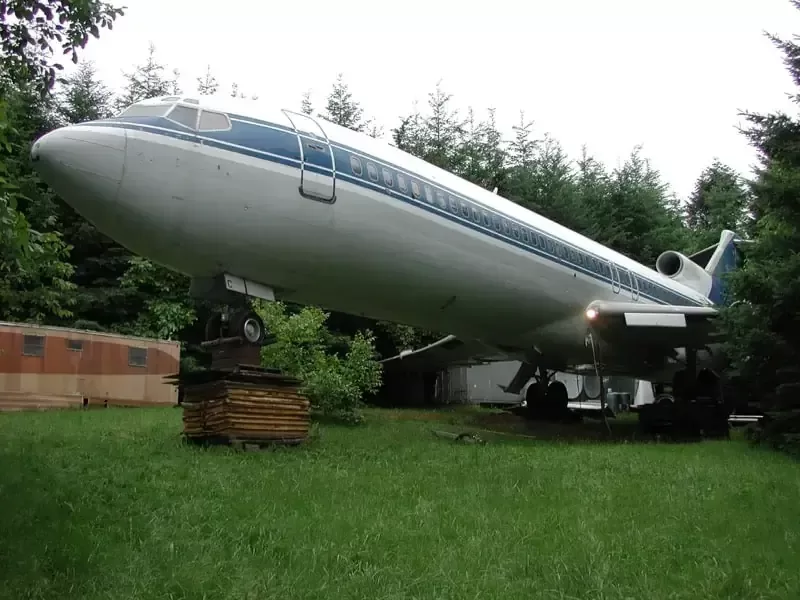
Original bathrooms back online
He also restored one of the original bathrooms, though it currently only has a temporary shower.
Since the majority of new PVC water pipe is apparently produced using a lead-based catalyst, which, according to what I’ve read, leaves some lead in the polymer, I’d prefer to stay away from it. Although I am aware that the levels are very low, polyethylene seems to me to be a much better option in terms of toxics. The only drawback I can see is that it is not as widely available as PVC. But rather than using the PVC I already have, I want to be patient and try to find some 1′′ or 1.25′′ polyethylene pipe for the new underground water line. To avoid ingesting phthalates, which are an inherent component of soft PVCs and do leach out, I’ll replace any soft PVC as soon as I can locate it and in any case before drinking from it. All of the aircraft’s new internal water pipe will be made of polyethylene.
Bruce is living a simple life inside the plane despite the fact that it has plenty of room. He uses a microwave and toaster to cook and sleeps on a futon. He makes a lot of improvised equipment and primarily consumes cereal and canned food. Two functional restrooms are also on board, but the shower is the coolest feature. Near the plane’s tail is where it is constructed.
Even though Campbell had lofty goals that were almost impossible to realize, he persisted and finished building his ideal house at the age of 65. The placement of the trick doors had him smitten, and he loved the way his plane’s rotating knobs and numerous hatches looked. He was incredibly content to live in his house thanks to these special additions.
He purchased the aircraft with every component in top condition and had not given any thought to flying the vehicle. He made the most of the aircraft’s parts and used it for his own joy as well as the joy of Portland’s bustling community despite the fact that it was completely stationary.
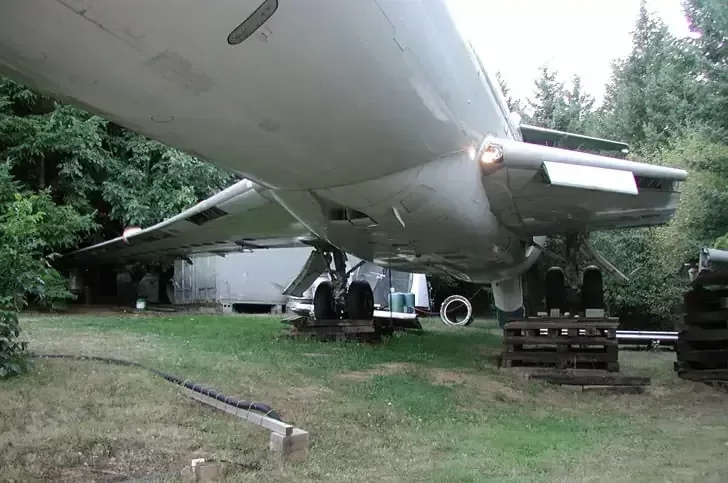
Cost
He paid $100,000 for his plane in 1999, then spent an additional $120,000 to move it from the Hillsboro airport and set it up on his undeveloped land.
Duplicate project again in Japan with a Boeing 747
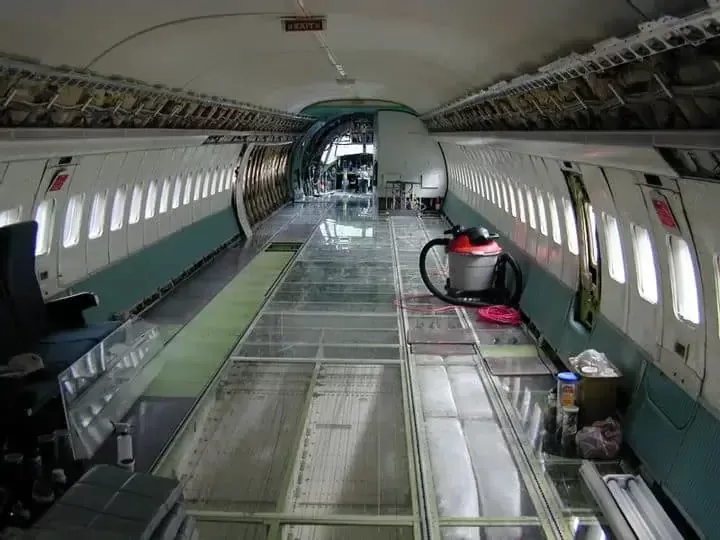
Campbell also intends to replicate his project using a Boeing 747 in Japan. He intends to buy a used 747 and construct a new house in Japan. He feels that changing the world for people and the environment is the purpose of his life. He gets all fired up when he thinks about recycling planes. He is happy to let curious onlookers and tourists stop by and check out his abode, saying, “My goal is to change humanity’s behavior in this little niche.” Additionally, he plans numerous events throughout the year. Additionally, he planned a concert on the grassy area under the wing of his aircraft.
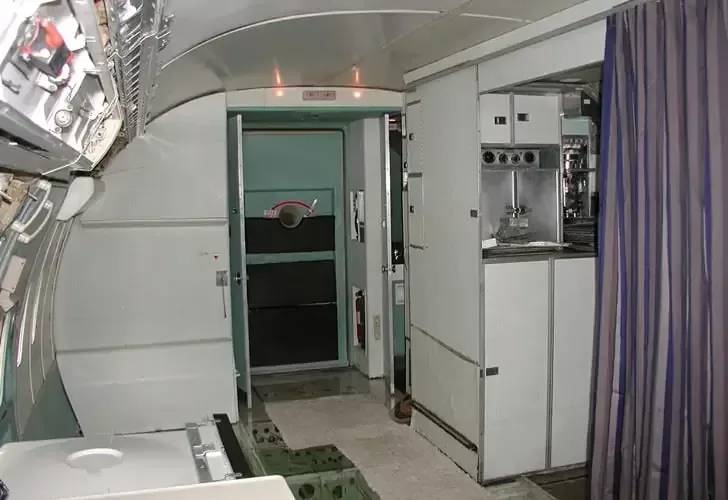
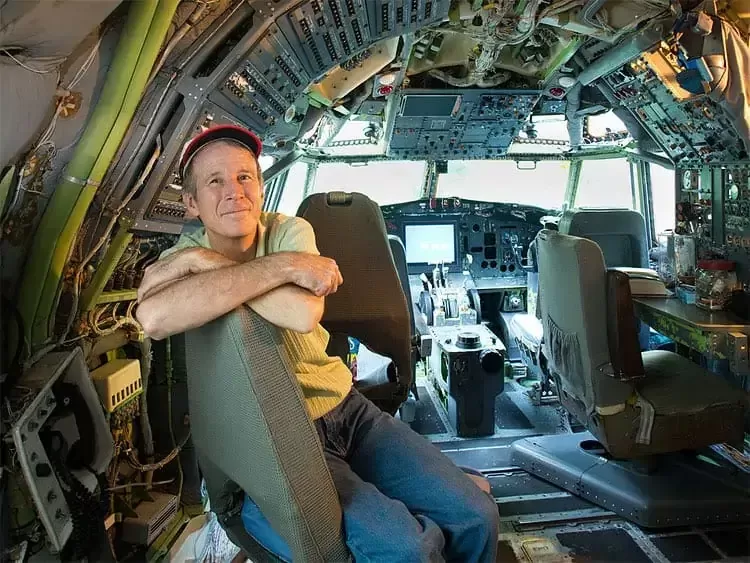

Domestic Flight Delay Caused by Live Snake on Board Leaves Passengers in Shock
A domestic flight was unexpectedly delayed for nearly two hours after a snake was discovered slithering inside the plane’s cargo hold. Thanks to the swift efforts of a professional snake catcher and airline staff, the reptile was safely removed without any harm to passengers, turning a potentially alarming situation into a story of caution and calm.

In 2018, a 30-year-old survived a close-range gunshot thanks to silicone implant
In 2018, a 30-year-old woman from Toronto, Canada survived a close-range gunshot thanks to her silicone breast implant. Doctors believe that the implant deflected the bullet away from her vital organs, and her only injury was a fractured rib.

Mom Cries After Seeing Her Deceased Daughter in Virtual Reality
Jang Ji-Sung lost her 7-year-old daughter to haemochromatosis in 2017, a rare disorder in which the body absorbs too much iron. The two reunited through the use of virtual reality technology.

Nevada’s Fly Geyser Is A Surreal Wonder That Looks Like Its On Another Planet
In 1964, an energy company accidentally created Nevada’s Fly Geyser after drilling into a geothermal pocket. Since then, the geyser has been releasing algae-filled scalding water five feet in the air, depositing minerals and forming a cone that sports vibrant hues of green and red.

How a Man Fooled Florida with Fake Penguin Tracks for 10 Years
In 1948, Florida’s Clearwater Beach was the stage for one of the longest-running and most peculiar hoaxes in American folklore. Giant three-toed footprints appeared mysteriously in the sand, sparking rumor and fascination about a 15-foot-tall penguin roaming the shores. For a decade, locals and visitors alike speculated and scanned for the elusive creature, never realizing the truth: these tracks were made by a man wearing 30-pound lead shoes designed to imitate an enormous penguin's footprint. This article uncovers the details of this elaborate prank and its lasting legacy in Florida’s cryptic history.

The story of The chicken that lived for 18 months without a head
Mike the Headless Chicken was a rooster whose head was accidentally chopped off but miraculously survived. This is due to most of the brain stem being left intact. He was fed using a special tube that delivered food directly into his esophagus. Despite his lack of a head, he lived for 18 months, gaining worldwide fame before ultimately choking on a kernel of corn during one of his tours, in a Motel in Fruita, Colorado.

This Yogi Spent 76 Years Without Eating or Drinking Anything and Confirmed by
Prahlad Jani, the starving monk who lived 76 Years without food and water.

Preserving Bodies in a Deep Freeze Await Revival
There are currently hundreds of deceased people in the U.S., including baseball legend Ted Williams, whose bodies are frozen in liquid nitrogen in hopes that future technology will be able to revive them.

Pierre Brassau: The chimpanzee painter who deceived the avant-garde world
Abstract paintings by a previously unknown artist “Pierre Brassau” were exhibited at a gallery in Sweden, earning praise for his “powerful brushstrokes” and the “delicacy of a ballet dancer”. None knew that Pierre Brassau was actually a 4 year old chimp from the local zoo.

The 1814 London beer flood
In 1814, there was a beer flood in London when a tank containing more than 300,000 gallons ruptured in which 8 people drowned.

Why Do Spiders Rain From the Sky? The Strange Ballooning Phenomenon
Every now and then, people around the world are amazed—and sometimes disturbed—to see thousands of tiny spiderlings floating down from the sky, seemingly raining on the earth below. This eerie spectacle is the result of a curious and fascinating behavior called ballooning, in which spiders use silk threads as invisible parachutes to catch the wind and fly. Recent scientific discoveries reveal that spiders can even harness Earth’s electric fields to take off without wind, making their aerial journeys feel almost supernatural. This article explores the science, mystery, and wonder behind the ballooning phenomenon.

Story of Peng Shuilin: Man with only half a body
We have a habit of whining in our daily lives. We never seem to be pleased with the things we have in life. "I want to be skinny," fat people say, "I want to be fat," slim people say. Poor people aspire to be wealthy, and wealthy people are never satisfied with their status. Everywhere we go, we're whining. Can you image how a man would want to live if he didn't have any legs or bums at all?

Mysterious ghost ship found with mummified captain inside [SOLVED]
German captain had been sailing the world for 20 years. It was unknown when or how he died or how long the ghost ship had been adrift

The Miracle Baby: Nigerian Couple in the UK Welcomes a Rare Blonde, Blue-Eyed Child
A black, Nigerian couple living in the U.K. gave birth to a white, blonde, blue-eyed baby that they call the "miracle baby."

Poto And Cabengo: The Secret Language Of Twins
Poto and Cabengo, as the two girls called each other, communicated in their own language. The twins were ignored by their parents and secluded from the outside world because their father felt they were developmentally retarded, and their unique language evolved as a result of that neglect.

Brazilian gang leader attempts to escape from Rio de Janeiro prison by dressing up as his daughter
In 2019, a Brazilian gang leader tried to escape from prison by dressing up as his daughter when she visited him behind bars and walking out of the penitentiary's main door in her place.

When the Sky Rained Fish: An Unbelievable Encounter Above Alaska
A small Alaskan plane was hit by a fish falling from the sky. It had been dropped by an eagle that misjudged its grip. The plane was unharmed, but it made the news as possibly the weirdest bird strike ever.

June and Jennifer Gibbons The silent twin who Only Spoke to Each Other
Identical twins June and Jennifer Gibbons were born on 11 April 1963 at a military hospital in Aden, Yemen where their father worked as part of the Royal Air Force.

The Story of Tsutomu Yamaguchi: The Man Who Survived Both Atomic Bombs
Tsutomu Yamaguchi’s story is one of astonishing survival and resilience. In August 1945, while on a business trip in Hiroshima, he endured the catastrophic atomic bombing and, unbelievably, survived to return to his home city of Nagasaki—only to face a second atomic attack days later. Officially recognized as the only person to survive both bombings, Yamaguchi’s life is a powerful testament to human courage, hope, and the devastating impact of nuclear warfare.

the world from someone predicting 2000 from a guy in 1910
Villemard, a French artist, illustrated how he imagined the future would be in the year 2000 in 1910.

Inspirational Journey of Billy Owen From Cancer Patient to Zombie Actor
A man called Billy Owen lost an eye and half of his face to cancer and used it to start a career as a zombie actor.

The Incredible Story of Martin Laurello, The Sideshow Performer With The Revolving Head
Martin Laurello was also known as 'The human owl'. He was born with the ability to turn his head a full 180 degree.

The Real-Life Sleeping Beauty: A Girl with Hypersomnia Syndrome
An Indonesian 17-year old teenager Siti Raisa Miranda or Echa, has a rare medical condition formally called Kleine-Levin syndrome (KLS) where she can sleep for days and weeks without being woken up. Echa was only 13 when she first slept for a week. She’s now 17, and her parents still need to feed her and change her clothes when she experiences the deep levels of grogginess.

The Heartbreaking Story Of Ella Harper, The ‘Camel Girl’
Ella Harper, Professionally known as the “Camel Girl” was born with a rare orthopedic condition that cased her knee to bend backward. Due to this condition, had to walked on all four legs, which resulted in her nickname as “Camel Girl”. Tough it was hard at first, but soon she made a fortune out of it.

How a Canadian Man Traded a Red Paperclip for a Two-Story Farmhouse
In 2005, Canadian blogger and entrepreneur Kyle MacDonald embarked on an extraordinary journey that captured the world’s imagination. Starting with nothing more than a single red paperclip, Kyle pursued a year-long chain of strategic trades that escalated from small, quirky items to a two-story farmhouse in a small town in Saskatchewan. What began as a playful social experiment became a legendary story of creativity, perseverance, and the power of barter in the digital age.

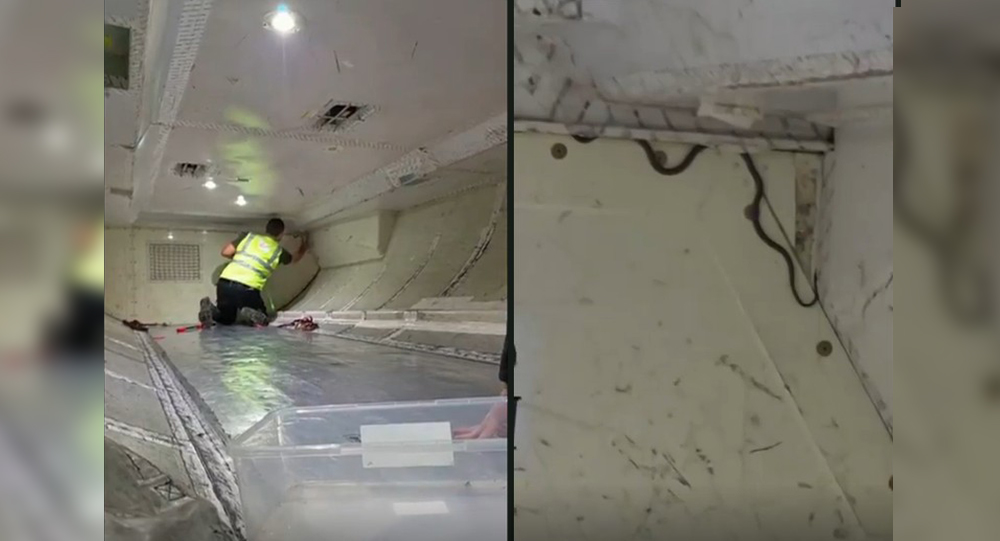
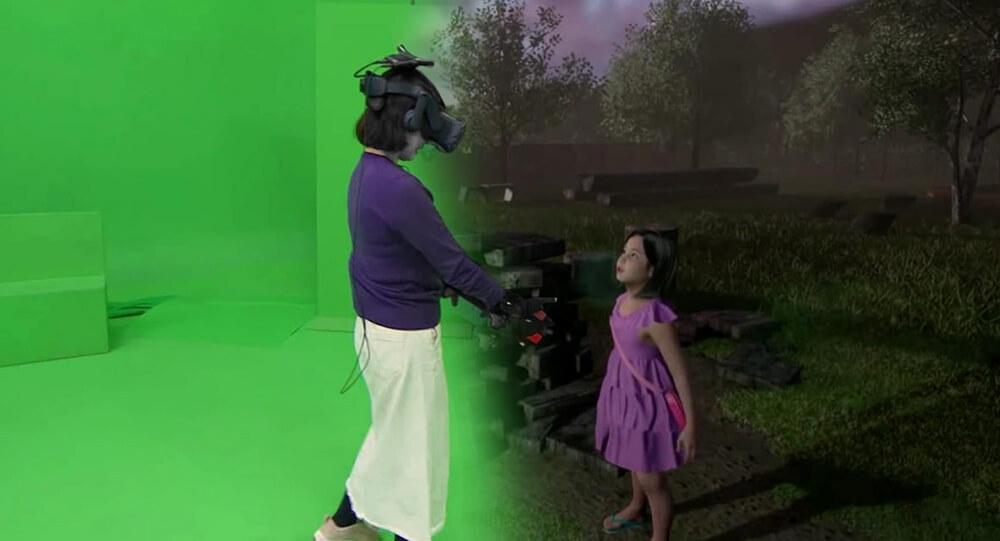

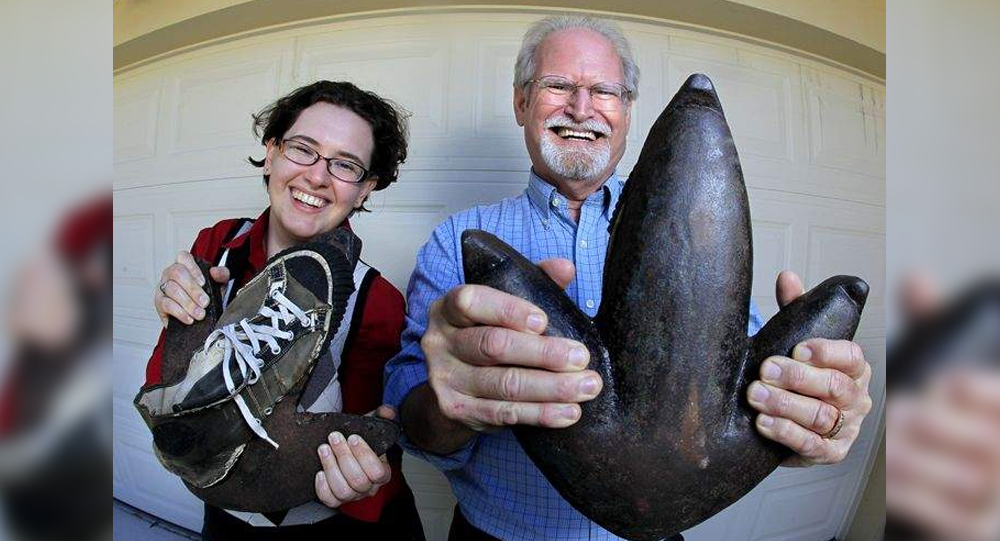
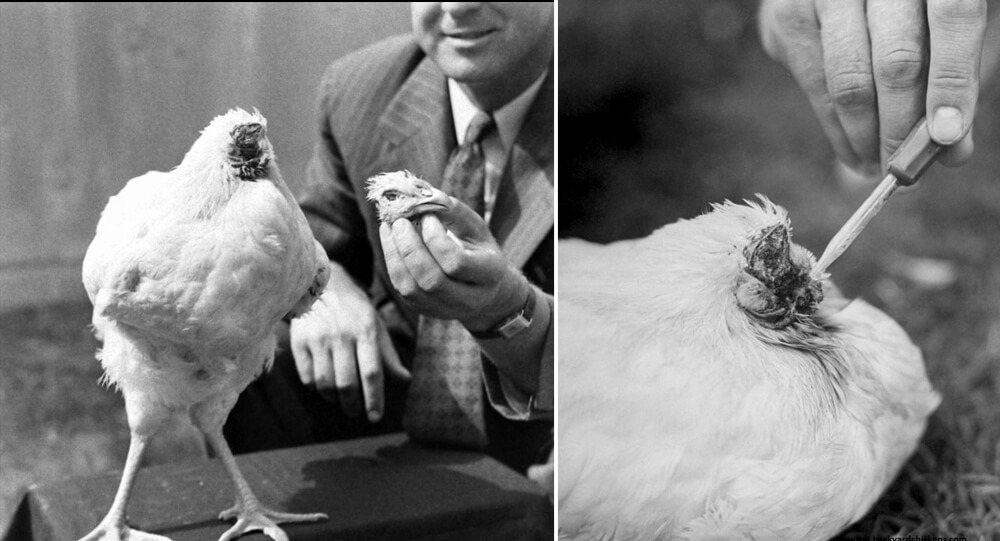

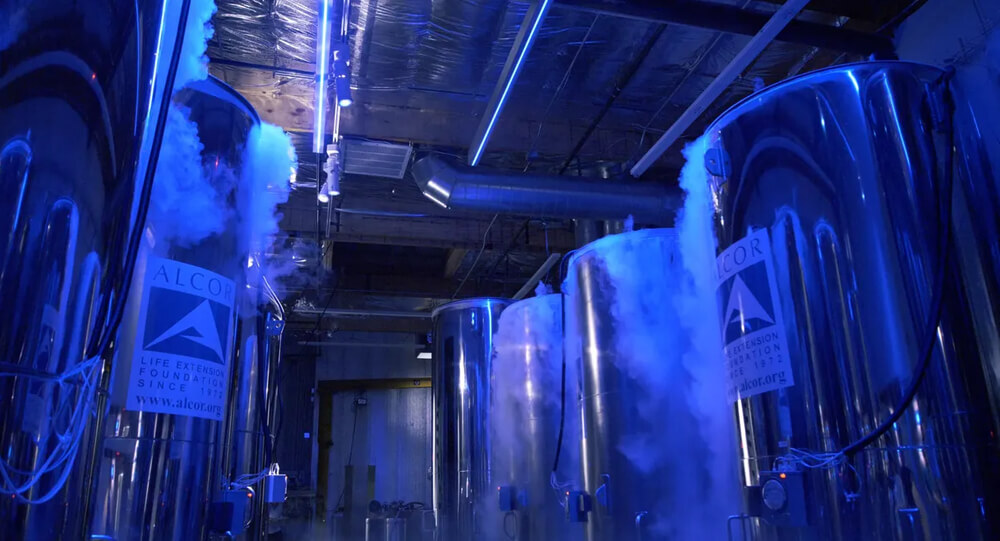
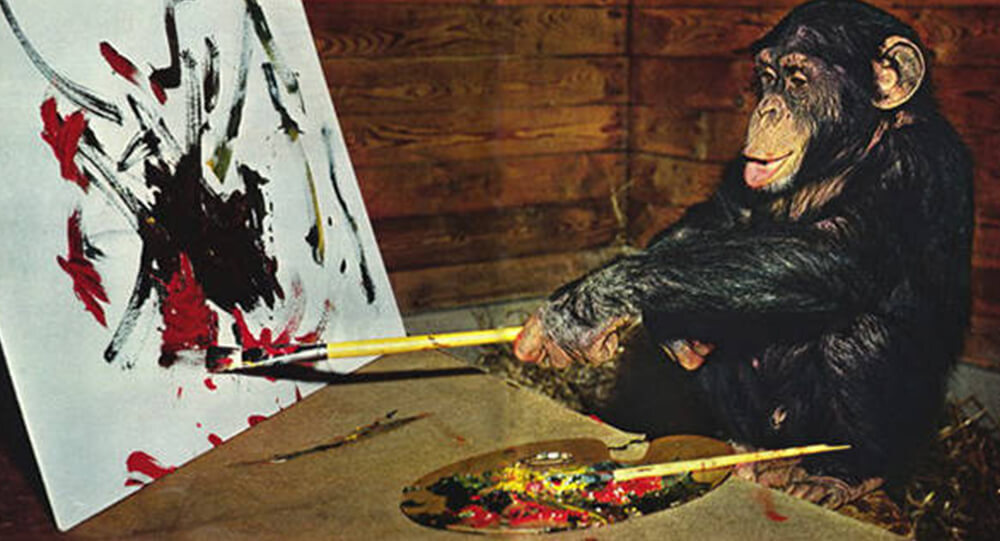
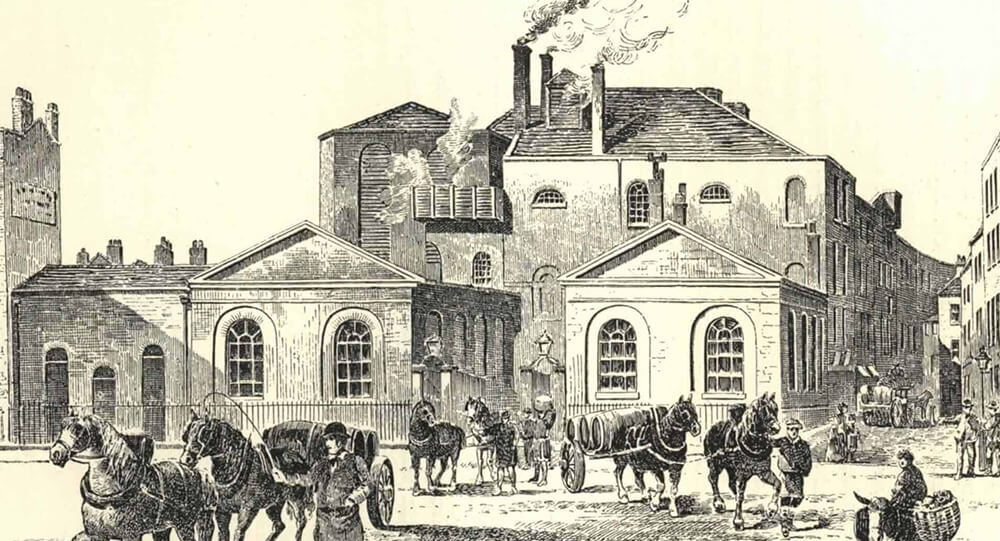
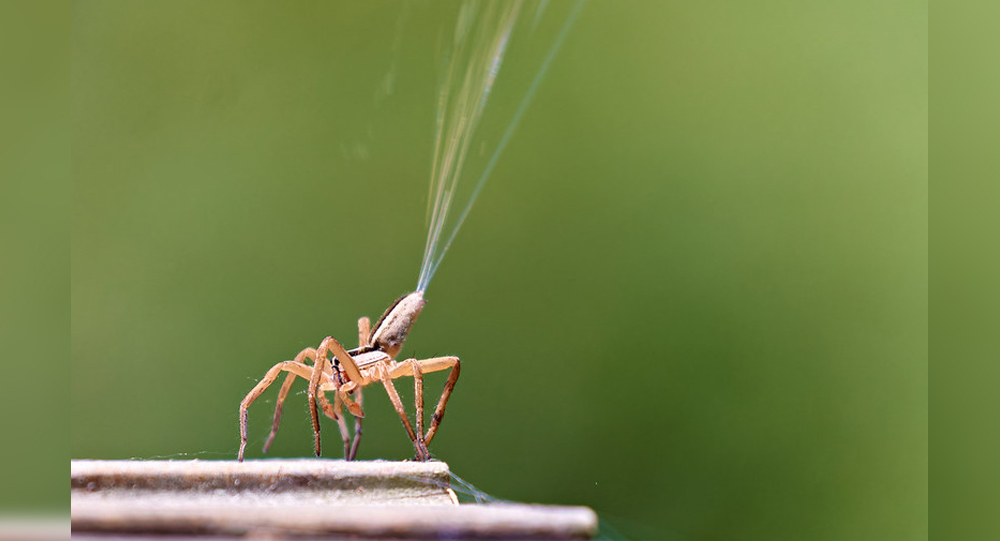

![Mysterious ghost ship found with mummified captain inside [SOLVED]](https://weeklyrecess.com/wp-content/uploads/2024/07/Solved-Mysterious-ghost-ship-with-mummified-captain-cover.jpg)

